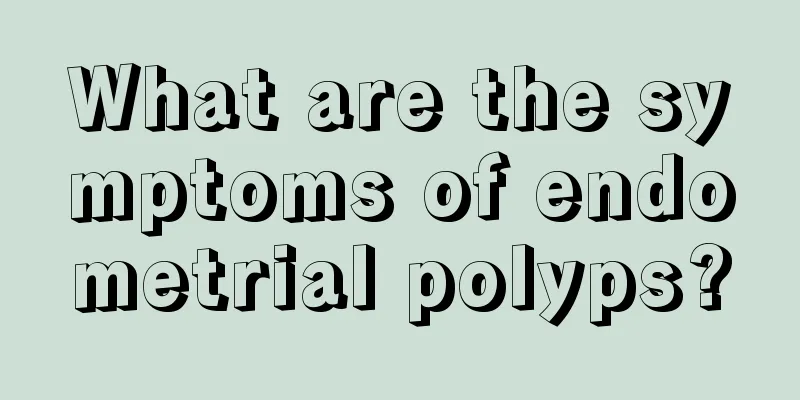What are the symptoms of endometrial polyps?

|
Among the common uterine tumors in women, uterine polyps are the most common. We know that once the uterus is diseased, it poses a great threat to women. Therefore, it is necessary for us to understand the common symptoms of endometrial polyps. Only in this way can we help us discover the presence of the disease as soon as possible, so that we can treat it as soon as possible. Let me describe it in detail for you. Uterine polyps can occur at any age after puberty, but are common in women over 35 years old. Single, small endometrial polyps often have no clinical symptoms and are often discovered during gross examination after hysterectomy due to other diseases, or are diagnosed after diagnostic curettage. Patients with multiple diffuse type often have menorrhagia and prolonged menstruation, which are related to the increase in endometrial area and excessive endometrial hyperplasia. Large polyps or polyps that protrude into the cervical canal are prone to secondary infection and necrosis, causing irregular bleeding and foul-smelling bloody secretions. Endometrial polyps are a very common type of localized endometrial tumor that can occur at any age due to excessive proliferation of the endometrium. They are smooth and fleshy in hardness and protrude from the uterine cavity. The pedicles vary in length. Some may protrude outside the cervical os, while others may have shorter pedicles. Smaller polyps generally have no clinical symptoms. Some polyps that protrude outside the cervix are discovered when bleeding occurs after sexual intercourse. Patients with endometrial polyps may experience the following symptoms: menstrual disorders, increased menstrual flow, prolonged menstrual period, variable bleeding, and spotting. Large endometrial polyps or polyps that protrude into the cervical canal are prone to infection and necrosis, causing irregular vaginal bleeding and foul-smelling bloody discharge. Patients with single, small endometrial polyps often have no symptoms. Due to the lack of typical and constant symptoms, endometrial polyps are often difficult to detect clinically. Menstruation is regular and is not affected by polyps, and there is no discomfort in the body. Without a hysteroscopy, it would be difficult to detect two small polyps hidden in the uterus. The common symptoms of endometrial polyps have been explained here. After reading the above article, everyone should have some understanding of the symptoms of endometrial polyps. Therefore, if female friends find that they also have the above symptoms, in order to prevent the disease from worsening, then female friends must go to the relevant gynecological hospital as soon as possible for a detailed physical examination. I hope that patients can recover their health as soon as possible. |
<<: What to do if endometrial polyps recur
>>: What are the early symptoms of endometrial polyps?
Recommend
Military training brings menstruation
Most high schools and universities will use milit...
How can a thoracic and lumbar fracture occur without any injury?
This is the 4773rd article of Da Yi Xiao Hu Thora...
Using 3 items incorrectly can cause you to have gynecological diseases
Some of women's personal or intimate items ca...
Where should I get moxibustion for excessive leucorrhea?
Leucorrhea is the secretion from the female vagin...
Why do women sweat when they sleep at night? How can they treat it?
Women have more physical problems than men, and w...
Why do loud farts not stink, and stinky farts not make noise? How can you fart without smelling or making noise?
Ending easter egg ①: I just want to talk about so...
Baking soda for vaginal douches
Maybe some of our female friends have to do some ...
What is the reason for prolonged menstrual period?
Women's menstruation will accompany them for ...
Let's talk about gastrointestinal endoscopy
Author: Wei Jian, deputy chief nurse, Beijing Fri...
Ovarian yoga for endocrine regulation
Yoga practitioners use unique exercise movements,...
What to use to treat athlete's foot during breastfeeding
Athlete's foot during breastfeeding is a comm...
Stack Overflow: Cloud programmers earn the most
199IT original compilation At the beginning of th...
Can I drink chrysanthemum tea for pelvic inflammatory disease?
Pelvic inflammatory disease is a very common dise...
Things to note for women during confinement
There are also some precautions for women after g...
How to treat vulvar itching?
Vulvar itching in women is a very common abnormal...









